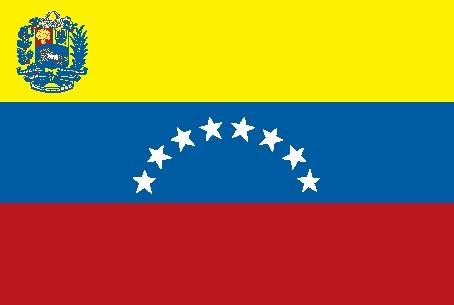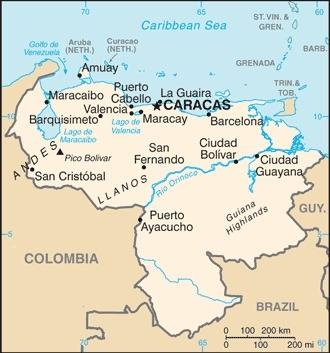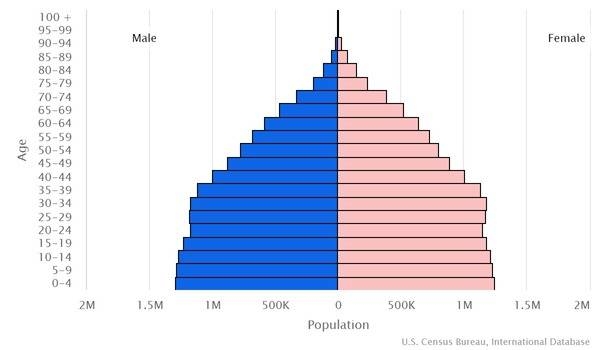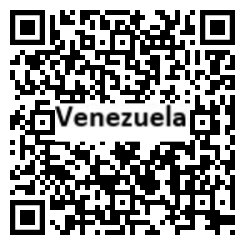Country Summary




Introduction
Background
Venezuela was one of three countries that emerged from the collapse of Gran Colombia in 1830 (the others being Ecuador and New Granada, which became Colombia). For most of the first half of the 20th century, Venezuela was ruled by generally benevolent military strongmen who promoted the oil industry and allowed for some social reforms. Democratically elected governments have held sway since 1959.
Geography
Area
total: 912,050 sq km
land: 882,050 sq km
water: 30,000 sq km
Climate
tropical; hot, humid; more moderate in highlands
Natural resources
petroleum, natural gas, iron ore, gold, bauxite, other minerals, hydropower, diamonds
People and Society
Population
29,789,730 (2022 est.)
Ethnic groups
unspecified Spanish, Italian, Portuguese, Arab, German, African, Indigenous
Languages
Spanish (official), numerous indigenous dialects
Religions
Roman Catholic 96%, Protestant 2%, other 2%
Population growth rate
2.43% (2022 est.)
Government
Government type
federal presidential republic
Capital
name: Caracas
Executive branch
chief of state: Notification Statement: the United States recognizes Juan GUAIDO as the Interim President of Venezuela
President Nicolas MADURO Moros (since 19 April 2013); Executive Vice President Delcy RODRIGUEZ Gomez (since 14 June 2018); note - the president is both chief of state and head of government
head of government: President Nicolas MADURO Moros (since 19 April 2013); Executive Vice President Delcy RODRIGUEZ Gomez (since 14 June 2018)
Legislative branch
description: unicameral National Assembly or Asamblea Nacional (277 seats; 3 seats reserved for indigenous peoples of Venezuela; members serve 5-year terms); note - in 2020, the National Electoral Council increased the number of seats in the National Assembly from 167 to 277 for the 6 December 2020 election
Economy
Economic overview
South American economy; ongoing hyperinflation since mid-2010s; chaotic economy due to political corruption, infrastructure cuts, and human rights abuses; in debt default; oil exporter; hydropower consumer; rising Chinese relations
Real GDP (purchasing power parity)
$269.068 billion (2018 est.)
Real GDP per capita
$7,704 (2018 est.)
Agricultural products
sugar cane, maize, milk, rice, plantains, bananas, pineapples, potatoes, beef, poultry
Industries
agricultural products, livestock, raw materials, machinery and equipment, transport equipment, construction materials, medical equipment, pharmaceuticals, chemicals, iron and steel products, crude oil and petroleum products
Exports
$83.401 billion (2018 est.)
Exports - partners
India 34%, China 28%, United States 12%, Spain 6% (2019)
Exports - commodities
crude petroleum, refined petroleum, industrial alcohols, gold, iron (2019)
Imports
$18.432 billion (2018 est.)
Imports - partners
China 28%, United States 22%, Brazil 8%, Spain 6%, Mexico 6% (2019)
Imports - commodities
refined petroleum, rice, corn, tires, soybean meal, wheat (2019)
Exchange rates
bolivars (VEB) per US dollar -
Page last updated: Monday, May 16, 2022
